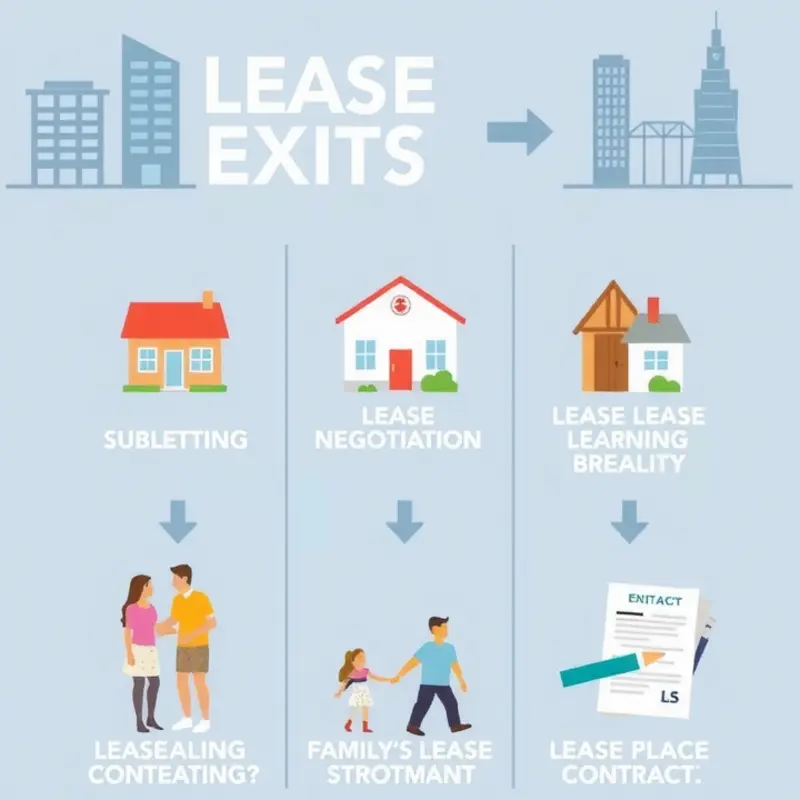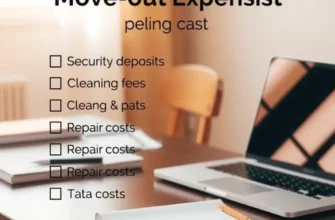Finding an ideal rental can be a challenging experience, but what happens when it’s time to leave? Whether you’re a student finishing a semester, a young professional relocating for a new job, or a family outgrowing their space, understanding lease exit strategies can save you stress and money. Lease agreements typically bind you for a specified term—often a year or more—but life circumstances can change. Before making decisions, knowing your options and rights can help you navigate this process smoothly. This guide is tailored for young professionals, first-time renters, students, couples, and families, giving you the tools to manage your lease responsibilities confidently. We’ll cover essential strategies including negotiating lease breaks, subletting, and understanding your rights under federal and state laws. Equipping yourself with knowledge will pave the way for a clear path from your current home to your next adventure.
Understanding Your Lease Terms and Rights

Before committing to any rental agreement, understanding the nuances of lease terms is crucial. A lease is a binding legal contract between you and your landlord, outlining your responsibilities and rights as a tenant. Familiarizing yourself with common terms and clauses can help you avoid potential pitfalls throughout your rental journey.
Key Lease Terms
Certain terms are universally found in leases. The most critical elements include the lease duration, rental payment amount, and due date. Additionally, the agreement may specify the security deposit amount and conditions for its return. Other common terms might include policies on property maintenance, alterations, and pet allowances. Misunderstanding these sections can lead to disputes or unexpected expenses.
One essential aspect often overlooked by renters is understanding “joint and several liability.” This term implies that each tenant is responsible not only for their share of the rent but for ensuring the entire lease amount is paid. If a roommate defaults, you might still be liable for the whole rent.
Identifying Lease Termination Clauses
Lease termination clauses are critical if you foresee circumstances that might require you to vacate early. Common conditions include military deployment, job relocation, or health-related issues. Scrutinize the lease for early termination fees or specific notice periods, which dictate how much notice you must give before vacating.
A “diplomatic clause” might provide an escape route, allowing early termination under specific conditions, typically requiring documentation. If your lease lacks favorable termination clauses, consider negotiating them before signing.
Notice Periods and Penalties
Leases usually require tenants to provide a written notice of their intention to vacate. The standard notice period ranges from 30 to 60 days. Not abiding by these timelines may result in penalties or forfeiture of the security deposit.
Understanding potential penalties for breaking your lease early is crucial. These penalties vary significantly; they can be as minor as forfeiting the security deposit or as severe as being liable for rent until the landlord finds a new tenant. If penalties seem too harsh, negotiate terms favorably before signing the lease.
Know Your Rights as a Renter
Understanding tenant rights under local and state laws can empower you in lease discussions and potential disputes. Every renter has the right to live in a habitable environment, free from significant health or safety hazards. Landlords must also honor privacy, typically requiring them to provide notice before entering your unit.
For renters who face financial difficulties, knowing how to protect oneself from unfair rental practices is critical. Consider reviewing rental fraud protection strategies before signing any agreements.
By grasping these facets of leasing, you equip yourself to make informed decisions, ensuring a smooth and predictable renting experience. As you explore further chapters, consider how these initial understandings might inform your overall rental strategy.
Your Options for Exiting a Lease

When life throws a curveball, exiting a lease can become a pressing necessity. Having various options at your disposal can make this process less daunting. Whether you’re considering a lease break, subletting, or have encountered significant life changes, understanding your choices can prevent potential pitfalls.
Negotiating a lease break is challenging but not impossible. Begin by reviewing your lease agreement to identify any relevant clauses. Some leases include early termination options, often conditioned on certain fees or finding a replacement tenant. When approaching your landlord, communicate clearly and respectfully. Present any legitimate reasons you might have, such as relocating for a job or a family emergency, and be prepared to offer solutions, like paying a reasonable penalty or assisting in finding a new tenant.
Subletting provides an alternative exit route, especially if your lease permit it. This option involves finding someone to take over your rental responsibilities, either temporarily or for the remainder of your lease term. Make sure to vet potential subtenants carefully to avoid complications. It’s crucial to communicate openly with your landlord about your intent to sublet and ensure compliance with legal and lease-specific requirements.
Significant life changes, such as marriage, divorce, or health issues, may necessitate an unexpected lease exit. In these cases, landlords may show more leniency. Again, transparent and honest communication is vital. Detail your situation and express willingness to cooperate in finding a solution that minimizes disruption for both parties involved.
Relocation due to job changes or an academic opportunity is a common reason for lease termination requests. If you need to move to a new neighborhood, consider reading this guide to selecting the right neighborhood to make an informed decision about your next living arrangement. Choosing a location that suits your lifestyle and employment needs can prevent future lease disruptions.
Understanding the implications of your actions is crucial. Exiting a lease improperly can lead to financial strain, legal issues, and credit problems. Always document your communications with the landlord and retain copies of any agreements or correspondence related to your lease exit. By approaching this transition with thoughtfulness and preparedness, you can navigate the process smoothly.
Ultimately, finding an amicable solution often lies in negotiation and honest communication. Whether opting for a lease break, subletting, or dealing with unexpected life changes, maintaining amicable relations with your landlord and being upfront about your circumstances will serve you well. These actions not only help in exiting your lease effectively but also preserve your renter reputation for future tenancies.
Final words
Navigating the complexities of lease exit strategies might seem daunting, but being informed can make the process manageable. Whether you find yourself needing to break your lease or simply looking for amicable ways to transition to a new home, understanding your options ensures you can approach your landlord with confidence. Remember, your lease is a legal document, and it’s essential to know your rights and responsibilities. Whether you negotiate your way out, sublet your space, or simply give your notice following procedure, informed decisions pave the way for smoother transitions. Keep this guide handy as you make your next move, ensuring clarity and peace of mind throughout your renting journey.









